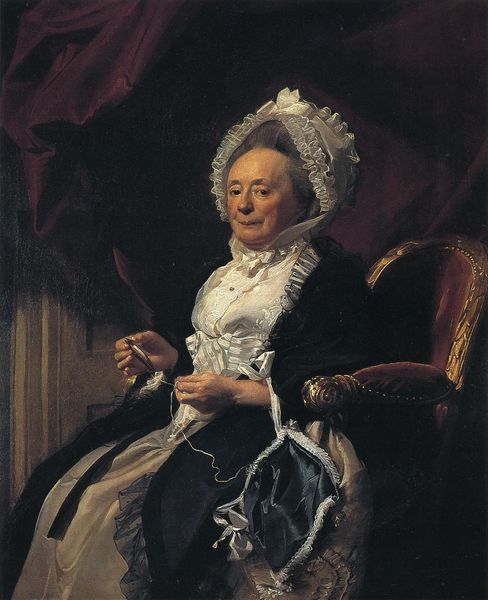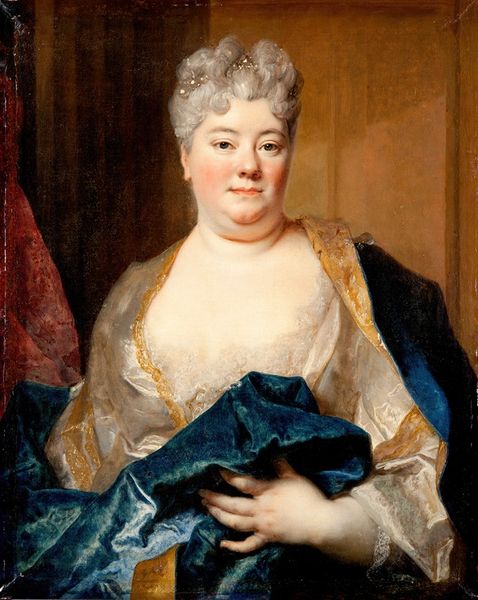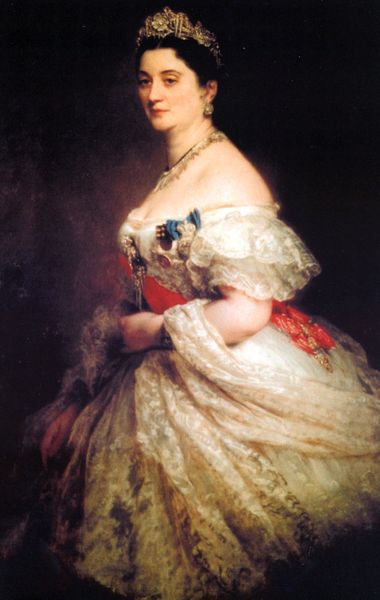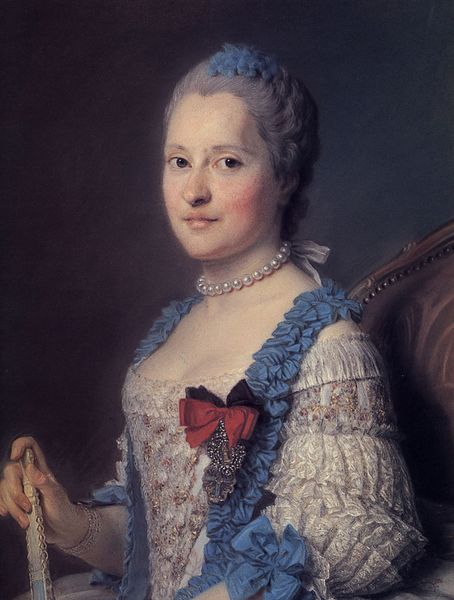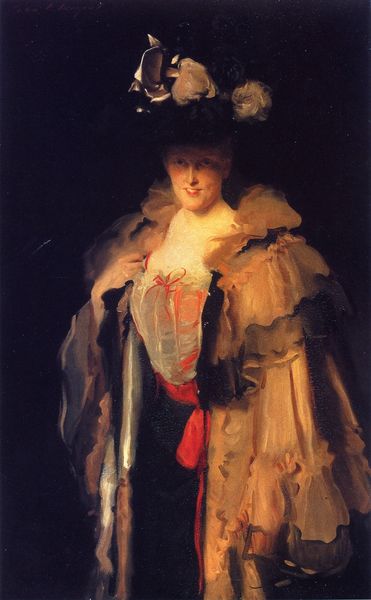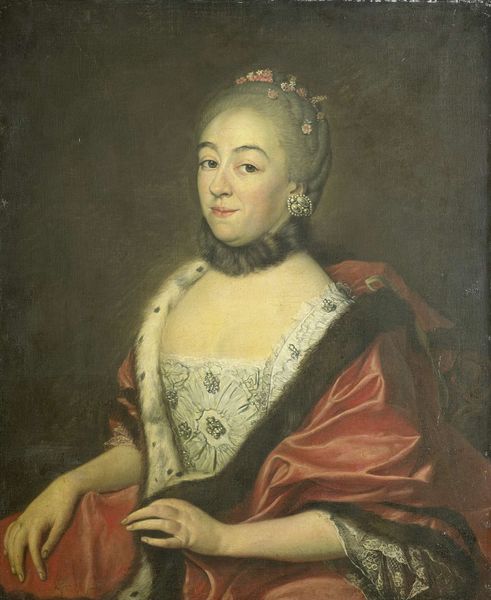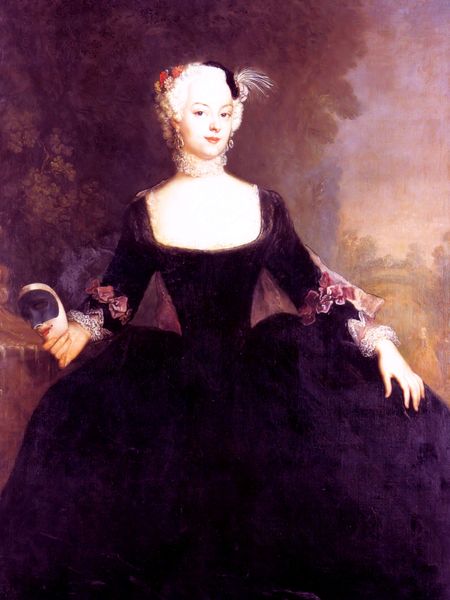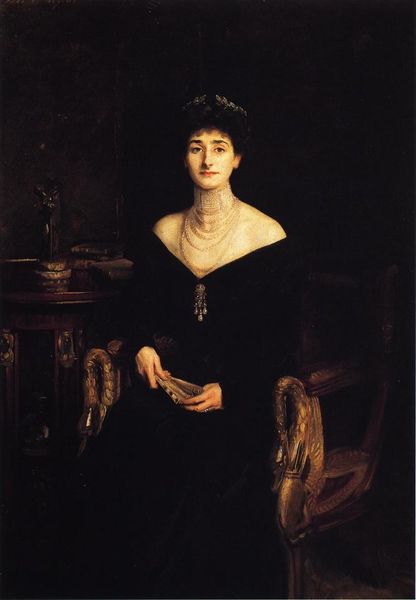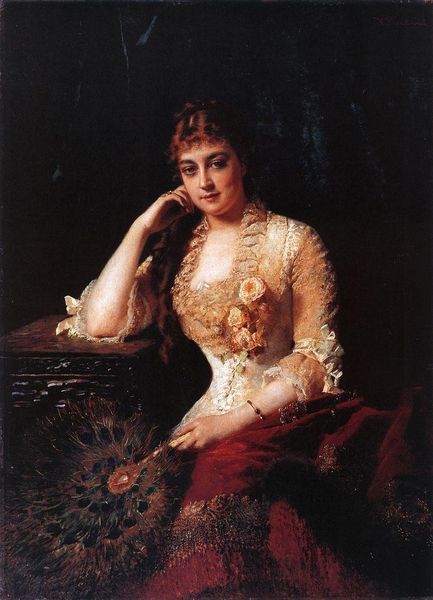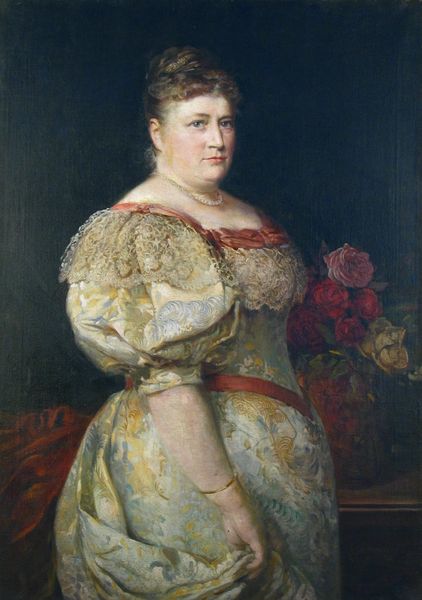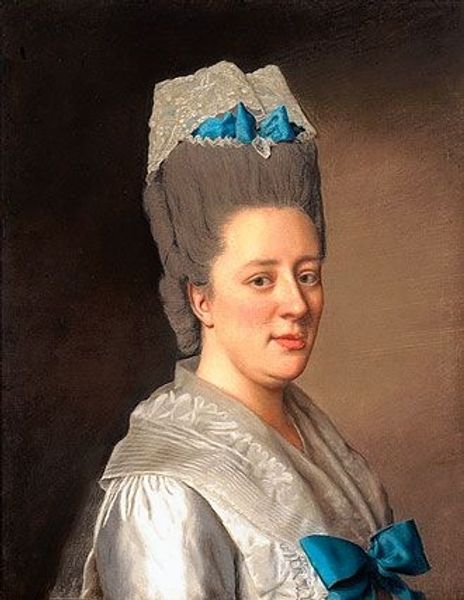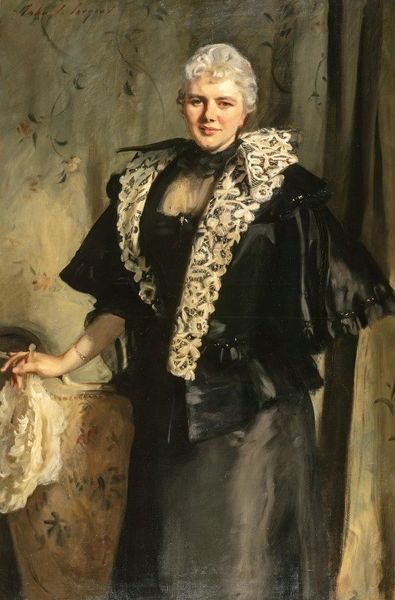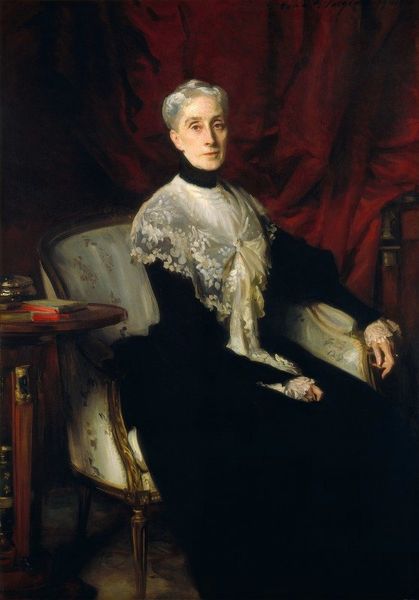
Dimensions: 144.8 x 94 cm
Copyright: Public domain
Editor: Here we have John Singer Sargent's "Lady Fauden Phillips," painted in 1898. It's an oil portrait. There’s a somberness to the piece, almost a quiet defiance in her expression. What stands out to you? Curator: Sargent's portraits of women during this era are particularly fascinating when viewed through the lens of feminist theory. This painting seems to operate within and against established conventions, what do you think about that? Consider the setting. How does it contribute to the story of identity construction at this moment? Editor: The backdrop and her dress seem almost traditional, but her gaze does feel quite direct, breaking the expectations of demureness. Is Sargent maybe making a commentary on the constraints placed on women? Curator: Exactly! The dark colors might reference mourning or seriousness. Yet, Lady Phillips also seems incredibly present. I wonder, in terms of politics, do you think the sitter might have wished to project this presence through a professional artist, leveraging the conventions of portraiture while subtly subverting them? Editor: I didn't really think of it that way initially. So she might be claiming a space of power in a very subtle way, maybe even a challenge to traditional power structures? Curator: Precisely. It also underscores that identities are negotiated, not just passively received. Consider how Jewish identity might play into this as well. What do you think? Editor: Now I'm considering her positioning. Her direct gaze makes me question my own assumptions about beauty, class, and even gender. I had originally only viewed it at face value. Thank you! Curator: Of course. It's through these nuanced interrogations of historical contexts that art reveals deeper societal meanings.
Comments
No comments
Be the first to comment and join the conversation on the ultimate creative platform.
